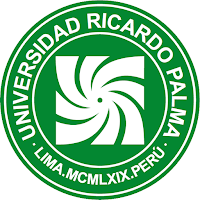The Consciousness of Pain in The Black Heralds
The Consciousness of Pain in The Black Heralds The Consciousness of Pain in The Black Heralds
Article Sidebar
Main Article Content
Abstract
With The Black Heralds (1919), Vallejo begins his first literary archeology that already hoarded, from previous compositions, a broad knowledge of the symbolic structures of the literary currents that flooded the gatherings and academic forums of the early twentieth century. So much so that a poem like «Campanas muertas» («Dead Bells»), published in La Reforma on november 13, 1915, that is, several years before the publication of The Black Heralds, will have a major importance. In addition, in that same year of 1915, Vallejo draws a new line in its complex poetic universe, benefiting from new friends and «fellow travelers» (Orrego, Garrido, Imaña, Haya de la Torre, etc.) and readings of Schiller, Poe and Tennyson that, with the years, will allow him to know better his reality and his time; a time that, in Vallejo, is always dialectical, that is, contradictory, pessimistic, of exaltation, of memories and expectations, but always human.
Article level metrics
Downloads
Metrics
Article Details

This work is licensed under a Creative Commons Attribution 4.0 International License.
La revista utiliza una licencia Creative Commons para mostrar a los lectores y a los usuarios cómo se pueden utilizar los contenidos publicados.
Los contenidos publicados en la revista están bajo una licencia CC-BY 4.0, la cual permite:
- Compartir, copiar y redistribuir el material en cualquier medio o formato.
- Adaptar, remezclar, transformar y construir a partir del material para cualquier propósito, incluso comercialmente.
Bajo los siguientes términos:
- Atribución. Usted debe dar crédito de manera adecuada, brindar un enlace a la licencia, e indicar si se han realizado cambios. Puede hacerlo en cualquier forma razonable, pero no de forma tal que sugiera que usted o su uso tienen el apoyo de la licenciante.
La información de licencia se muestra e incrusta en las páginas de artículos y en ficheros de texto completo como sigue:
«Este obra está bajo una licencia de Creative Commons Reconocimiento 4.0 Internacional».
Alegría, Fernando (1971). «Las máscaras mestizas». En Flores, Ángel (ed.). Aproximaciones a César Vallejo. Nueva York: Las Américas, 193-207.
González Vigil, Ricardo (2014). «Las tres dimensiones del yo no sé de César Vallejo». En Flores Heredia, Gladys (ed.). Vallejo 2014. Actas del Congreso Internacional Vallejo Siempre. Lima: Cátedra Vallejo, 138-143.
Marcuse, Herbert (1968). Eros y civilización. Barcelona: Seix-Barral.
Merino, Antonio (1988). En torno a César Vallejo. Madrid: Júcar.
Ortega, Julio (2014). César Vallejo: la escritura del devenir. Barcelona: Taurus.
Vallejo, César (1988). Los heraldos negros. Edición de René de Costa. Madrid: Cátedra Vallejo.
__________ (1996). Antología poética. Edición de Antonio Merino. Madrid: Espasa Calpe.
__________ (2019). Poesía y narrativa completas. Edición de Antonio Merino. Madrid: Akal.
Most read articles by the same author(s)
- Antonio Merino, Escalas: the awareness of time and pain , Archivo Vallejo: Vol. 6 No. 12 (2023): July - December
- Antonio Merino, César Vallejo and the staging of ideologies: Towards a new aesthetics of reality , Archivo Vallejo: Vol. 5 No. 10 (2022): July - December
- Antonio Merino, Las estaciones de lo Real. César Vallejo y la (no) poética del 27 , Archivo Vallejo: Vol. 1 No. 1 (2018): January - June
- Antonio Merino, The window, the street, the ink, the scribble... César Vallejo against the reality of his time , Archivo Vallejo: Vol. 4 No. 8 (2021): July - December










